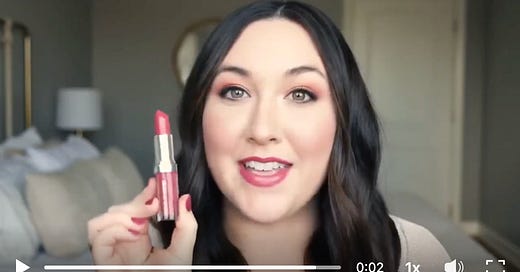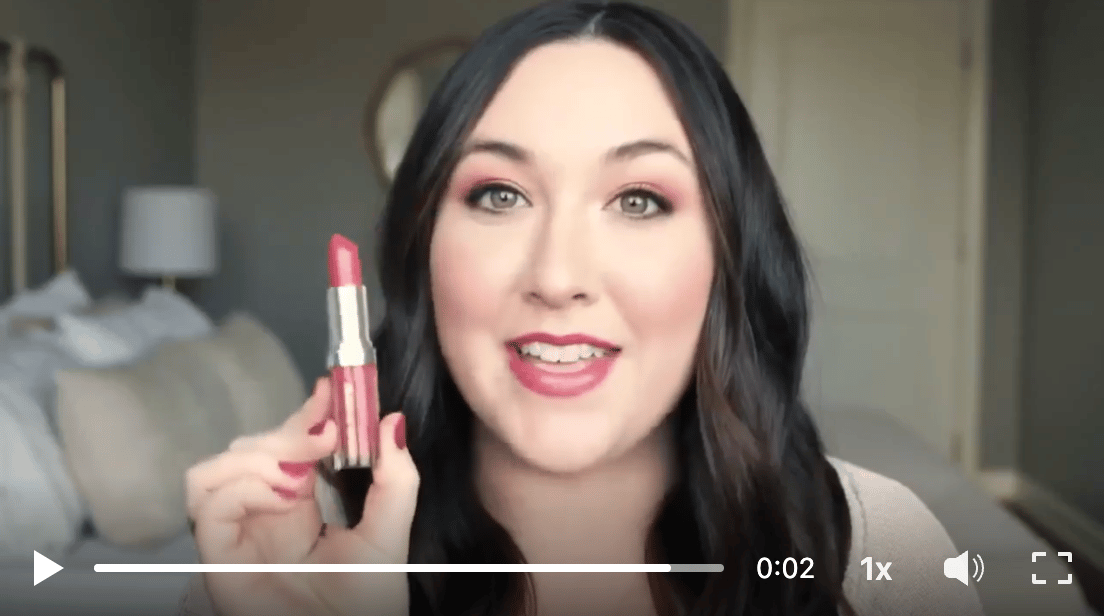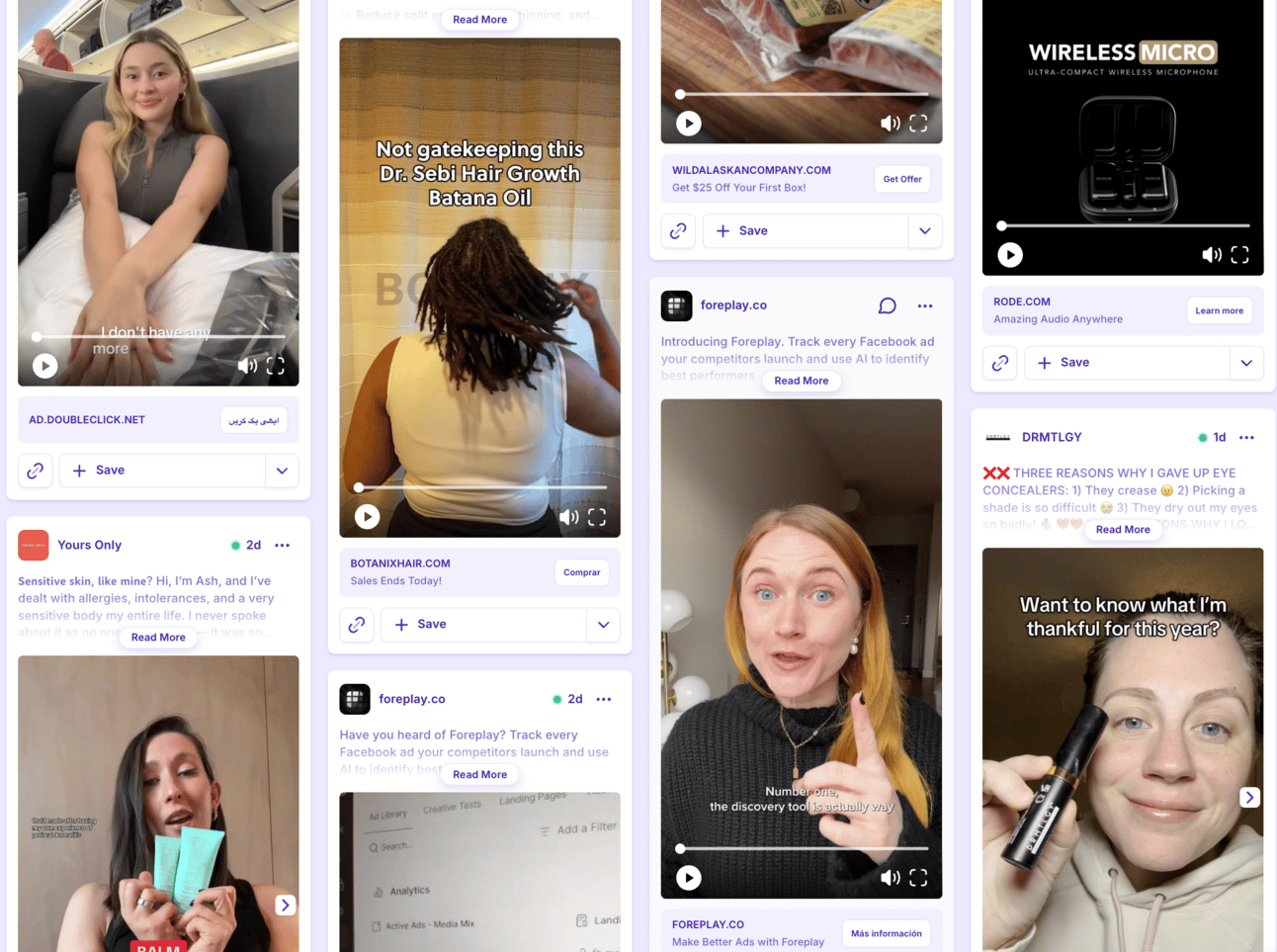Your customers aren't stupid
The channels, formats and technology we have available to us as marketers will always be changing – but the fundamentals never will.
This person doesn’t exist, and they’re recommending you lipstick
Most startups have the same problem when it comes to marketing. They have no physical stores, no celebrity endorsements and no TV ads. They’re usually competing with some conglomerate that has been around for a hundred years that eats up huge chunks of market share and keeps growing without a lot of effort.
Big brands get bigger and small brands don’t have a chance. Even though newer products are often better, the brands themselves lack the recognition and love required to overcome the inertia and fear most people have in trying something new.
But startups have an ace up their sleeve. The customers they do win typically tend to fall in love with them and become advocates for the brands quickly. Allbirds, Wise and Airbnb all grew this way. You couldn’t walk down the street in San Francisco in 2014 without some idiot telling you about his shoes.
Startups quickly realised that having evangelical customers was actually one of the best ways to convince other potential customers to try their products. Around the same time, some clever marketer worked out that these people also have iPhones in their pocket.
And, just like that, User Generated Content (UGC) was born. And it was so effective that it ushered in a whole new era of internet marketing that cut through the noise better than any other form of content at the time.
Naturally, we couldn’t get enough
Who’d have thought that getting your customers to create platform native Trustpilot ads would help you to drive more brand trust and greater conversion through the funnel. This shit was like visual gold. It could work throughout the funnel building brand, driving conversion and solving every customer problem along the way.
But after a while marketers ran into a problem. Just owning an iPhone wasn’t enough. Not everyone with a £1,000 camera in their pocket can shoot videos worth watching. Like your parents. Why do they keep zooming into everything?
The desire for more and more UGC created a new market. The people who got really good at shooting authentic social content starting working out they could do the same for brands. And the content creator industry was born.
It was UGC-as-a-Service. Captivating, interesting or just absurdly attractive people starting talking into their phones about products and services they’d literally never heard of because marketers couldn’t get enough of this kind of content.
Literally millions of videos flooded the internet. The same format, for the most part, repeated over and over again for every conceivable brand and product you can imagine. And we just expected our audiences to open up and gobble it down.
But it was missing the most important bit.
The internet became completely swamped by content that looks and feels like UGC – but isn’t. It is CGC - creator generated content - and it’s missing the most important bit, the user.
Content from actual users, with their lived experience of your brand and product, was nowhere to be found. The gold dust that gave startups a fighting chance was gone.
And sure, influencers promoting products they’ve never used happens all the time, but the difference is they have established audiences that trust what they have to say. They can build brand trust in a different way. Creators often have little to no actual social following themselves. They’re just good at reading briefs, smiling and editing videos.
The point here isn’t to take a jab at creators. They’re really good at what they do and like anyone in any job really they’re just meeting the need in a market. It’s not their fault that there’s a huge demand for their services. The problem is the marketers. I’m talking to you.
My hands are dirty too. We launched dozens of CGC over the last year or so at Yonder. And I’ve realised that the difference between UGC and CGC is night and day. I’ve since implemented a rule that all creator content has to come from people who actually love our product. I’d rather someone learn how to their iPhone camera.
Now AI is ruining it for all of us
So now we’ve ended up with that woman above, who doesn’t exist, recommending us lipstick that they’ve never used because they don’t have lips because they don’t exist. It’s ridiculous.
So while some AI nerds on LinkedIn are losing their shit over the power of these tools to create content that, on the surface, looks like the content that’s always worked. They’re forgetting why it worked at all.
The reality is that while you might be able to produce this content more affordably, you’ll probably end up paying more for it anyway. Even if it works in the short term, over time, this content won’t perform as well, so your media costs will go up. Just reducing your production costs isn’t actually valuable to your business.
Think about the intention behind every campaign
All of this will happen because, ultimately, your potential customers aren’t stupid. And when you serve them this kind of content you’re not respecting the complex purchase journeys most people need to go through in order to try a new product.
UGC can play a vital role in helping your brand catch up with more traditional, established brands by building trust quicker and you’re completely missing the point if you think the goal is to produce loads of this content cheaply.
For marketers sleepwalking into this weird AI optimisation hack, it’s important to stop and think about why you’re actually doing it.
Every piece of content should address a challenge, sticking point, concern or lack of information your potential customers have for your product. AI can help you in a thousand ways but mimicking the real genuine experience of your customers isn’t one of them.
Sure, in the short term you’ll be able to dupe some people into buying your product by using content from people that don’t exist, but as the internet fills up with AI garbage over the next few years, actual people with lived experiences using your brand will become all the more valuable.
AI is a tool, like a bunch of other ones at your disposal, that can help you to be a better marketer. But while the channels, formats and technology we have available to us as marketers will always be changing – the fundamentals never will.






Another banger from you Mr Davies.